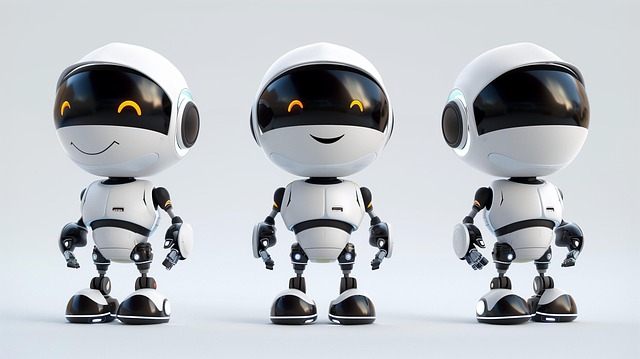Chatbot AI, driven by NLP and machine learning, offers two main types: rule-based for simple tasks and ANN for complex interactions like customer service and personal assistants. Building a chatbot involves platform selection (e.g., Dialogflow, IBM Watson), defining its purpose, designing conversational flows, and training with diverse data using rule-based systems or machine learning. Regular testing and fine-tuning are vital for optimal performance, ensuring the chatbot interprets user input accurately and provides enhanced experiences.
“Unleash the power of conversational AI with our comprehensive guide on creating chatbots. In this article, we demystify the world of chatbot AI, breaking down its core concepts and diverse types. From understanding the fundamentals to mastering development techniques, you’ll explore the tools shaping modern chatbots. Learn how to implement and train your virtual assistant for exceptional performance, ensuring it provides valuable, accurate interactions. Dive into this insightful journey to harness the potential of chatbot ai.”
- Understanding Chatbot AI: The Basics and Types
- Building a Chatbot: Tools, Techniques, and Development Steps
- Implementing and Training Your Chatbot for Optimal Performance
Understanding Chatbot AI: The Basics and Types

Chatbot AI, or Artificial Intelligence, is a cutting-edge technology that powers intelligent virtual assistants and conversational agents. At its core, Chatbot AI focuses on natural language processing (NLP), enabling machines to understand, interpret, and generate human language in a way that feels natural and engaging. By leveraging machine learning algorithms, these bots can learn from user interactions, adapt their responses, and provide personalized experiences.
There are primarily two types of chatbot AI: rule-based and artificial neural networks (ANN). Rule-based chatbots follow predefined rules and scripts to respond to user inputs. They are excellent for handling simple, repetitive tasks and providing quick answers based on a set of known scenarios. On the other hand, ANN chatbots, often referred to as deep learning or neural chatbots, use advanced machine learning techniques to process vast amounts of data. These chatbots can understand context, learn from user behavior, and generate more human-like responses, making them ideal for complex customer service interactions and personal assistants.
Building a Chatbot: Tools, Techniques, and Development Steps

Building a chatbot AI involves a strategic combination of tools, techniques, and well-defined development steps. The first step is selecting an appropriate platform or framework that aligns with your project’s scope and complexity. Popular options include Dialogflow (Google), IBM Watson Assistant, Microsoft Bot Framework, and Rasa, each offering unique features for natural language processing (NLP) and machine learning (ML). These platforms provide pre-built components like intent recognition, entity extraction, and context management, accelerating development.
Next, define your chatbot’s purpose and design its conversational flow. This involves creating a dialogue tree that maps out user interactions and responses. You’ll specify intents (user intentions) and entities (relevant data points) to train the chatbot AI effectively. Techniques like rule-based systems, machine learning algorithms (e.g., decision trees, neural networks), or a blend of both can be employed. During development, rigorously test and refine your chatbot’s performance using diverse datasets, continually refining its understanding of user inputs to deliver more accurate and contextually relevant responses.
Implementing and Training Your Chatbot for Optimal Performance

Implementing and training your chatbot AI is a critical step in ensuring its optimal performance. Once you’ve developed the initial framework, it’s time to feed it with vast amounts of data relevant to its intended purpose. This process involves teaching the chatbot by providing examples and context, allowing it to learn from human interactions. The more diverse and high-quality the training data, the better equipped the chatbot will be to understand user queries and provide accurate responses.
During training, you’ll also need to fine-tune various parameters, such as understanding intent, entity recognition, and dialogue management. These aspects enable your chatbot AI to interpret user input, identify relevant entities, and maintain coherent conversations. Regular testing and evaluation are essential to measure the chatbot’s performance, pinpoint areas of improvement, and make necessary adjustments for enhanced user experiences.
Creating a chatbot involves understanding the fundamentals of chatbot AI, choosing the right tools and techniques, and implementing effective development steps. By leveraging the power of artificial intelligence, you can build chatbots that enhance user interactions and deliver exceptional experiences. Whether it’s rule-based or machine learning-driven, these virtual assistants are transforming the way we communicate with technology, making them a valuable asset for businesses in today’s digital landscape.
